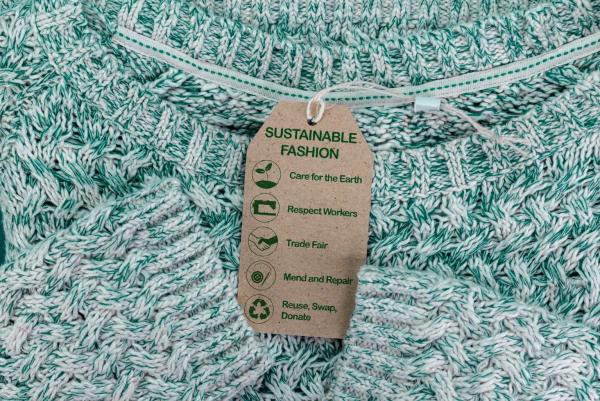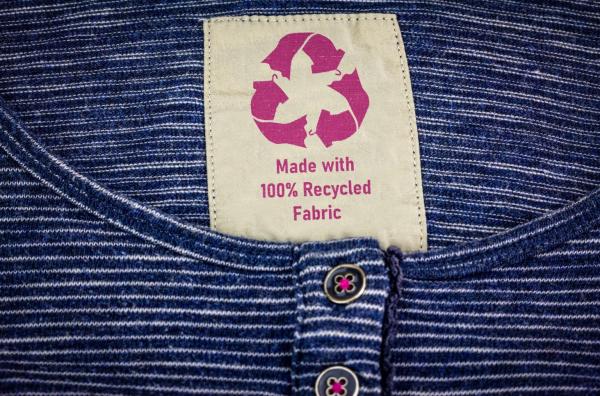What Are Eco-Friendly Clothes?


It is no secret that the current production model of the textile industry, known as fast fashion, has a strong negative impact on the environment and is not sustainable. This model is based on fast changing fashion with large productions, low prices and high turnover of collections. In recent years, the concept of sustainable fashion has become increasingly popular. Designers and manufacturers are already working to move toward sustainable fashion, driven by customers who no longer see the throwaway culture as logical.
In the following oneHOWTO article, we explain in detail what is sustainable fashion and what are its advantages both for the environment and for the consumer.
What is sustainable fashion?
In the strict sense of the word, sustainable fashion is a broad term that describes products, processes, activities, and actors (brands, consumers) that strive for a carbon-neutral fashion industry built on equity, social justice, animal welfare, and environmental integrity. Therefore, both the working conditions and materials used are sustainable, ecological, and fair.
Awareness of environmental issues is growing by leaps and bounds, forcing the textile sector, like many other industries, to adapt to the new demands of consumers who are increasingly concerned about the environment and the planet's resources. In this context, the concept of sustainable fashion is evolving to revolutionize the sector and reverse the environmental and social impact it causes.
Sustainable fashion promotes fair pricing, well-laid economic targets and products made from high quality materials that are responsibly sourced and recycled when possible.
What is fast fashion?
Fast fashion, on the other hand, is the phenomenon of launching clothing collections that follow the latest fashion trends and are designed and manufactured in an accelerated and cost-effective manner.
In this way, the industry offers consumers the opportunity to purchase new garments at affordable prices and on a continuous basis with about 50 collections per year, as opposed to the traditional annual spring/summer and fall/winter collections.
In this production model, garments are made from low-quality materials to ensure a low price, so one could practically speak of disposable clothing. In other words, the rapid production affects the low durability.
In order to meet the deadlines imposed by fast fashion, the garments are manufactured in countries with precarious working conditions. The terrible working conditions, including a miserable wage, represent an ethical problem and a clear example of exploitation, as well as a violation of human rights, including the exploitation of child labor and forced labor.
Benefits of sustainable fashion
The benefits of sustainable fashion extend beyond the environment to society and our wardrobe, as it gives us exclusive garments that can last for years. To delve a little deeper into the topic, here are a number of benefits of sustainable fashion:
- Reduces the negative impact on the environment: by using natural materials such as organic cotton or recycled fibers, the negative impact on the environment is significantly reduced.
- Encourages recycling and reuse: sustainable fashion advocates for the reuse of garments and invests in second-hand clothing. It also seeks to make the best use of recycled garments and materials to produce all types of new clothing of optimal quality.
- Guarantees fair and paid labor: if a garment is very cheap, in most cases it means that behind it there is a person working in inhumane conditions. This is not the case with fair trade and sustainable fashion, because the price of the garment is enough to pay everyone involved in the product their fair share.
- Supports local businesses: with sustainable fashion, you help the fashion industry break away from the big brands and their factories and opt for a local business.
- Promotes high quality garments: since it is a rather decentralized fashion, each brand decides for itself which garments to design. Usually, only a few garments are produced, and they are not renewed when the stock runs out. So not only do you get high quality garments that last for years, but you are also one of the few who wear them.

Identifying sustainable garments
Sustainable fashion is booming, but unfortunately there are those who are fraudulently trying to profit from this movement. To consume sustainable fashion, you need to distinguish between garments that are truly sustainable and those that aren't. Here are some things to keep in mind:
- Brand: research whether it is a green-certified company. Pay attention to what the media and ethical groups are saying about the brand. Also check to see who the suppliers and manufacturers are. Make sure the company or brand you buy the garment from is transparent when it comes to worker treatment and conditions.
- Materials: the labels of the garments also indicate which materials are used and their percentage. If the materials are not sustainable, the garment is neither sustainable nor environmentally friendly, no matter how small the percentage of these materials was.
- Place of manufacture: make sure the garment is not made in countries that do not have labor laws or are known to exploit workers. Often manufacturers from these countries also use toxic dyes and ignore proper waste disposal.
- Packaging: if the manufacturer claims that the garment is sustainable, but it is handed to you in a plastic bag, something is wrong.
- Label: the European Union has its own label, the Ecolabel, which supports and recognizes products made with minimal impact on the environment. For products made from recycled materials, there is the Global Recycle Standard Certification.
The fashion industry is not the only industry trying to reduce its environmental footprint, the cosmetics industry is doing the same.
If you want to read similar articles to What Are Eco-Friendly Clothes?, we recommend you visit our Fashion & Style category.





